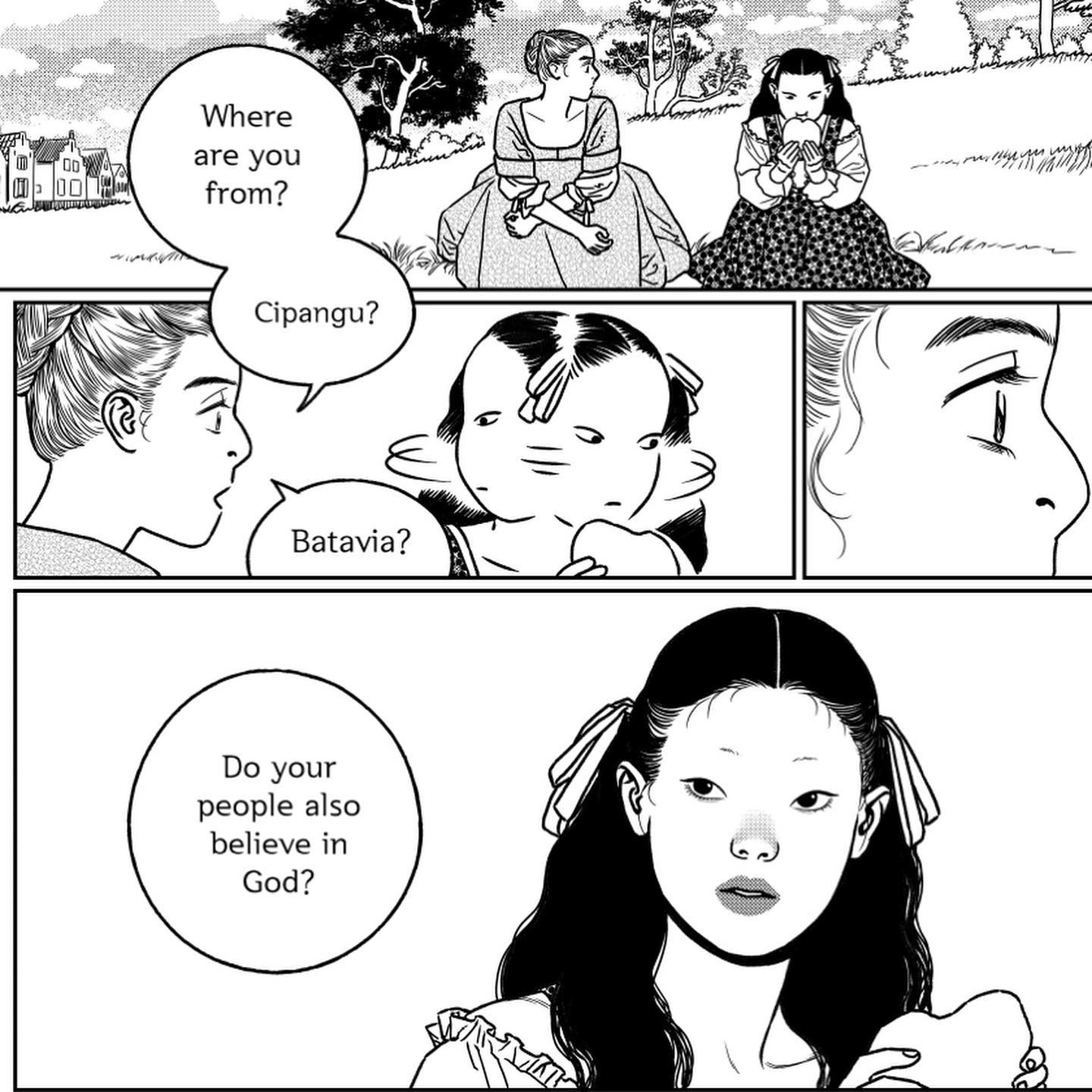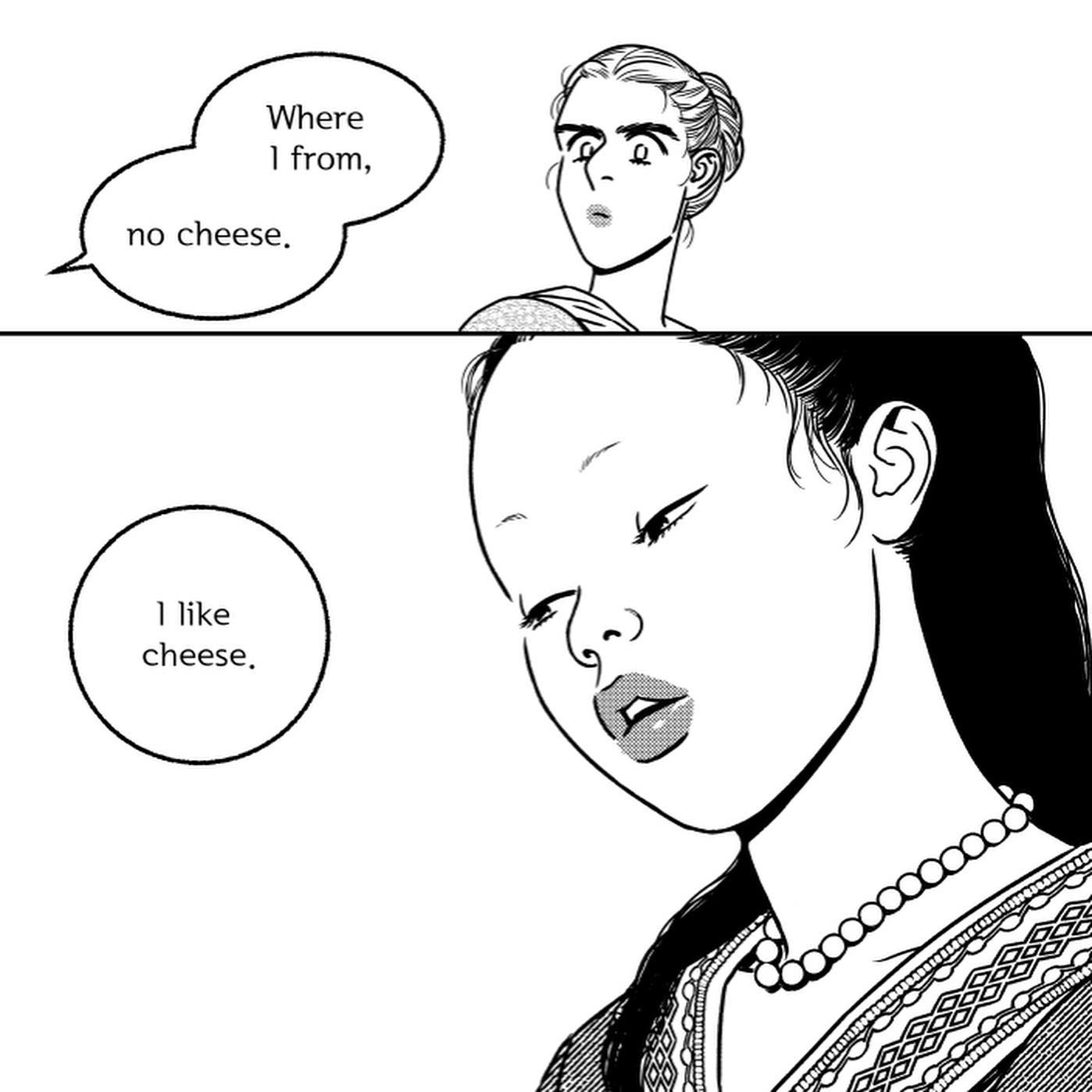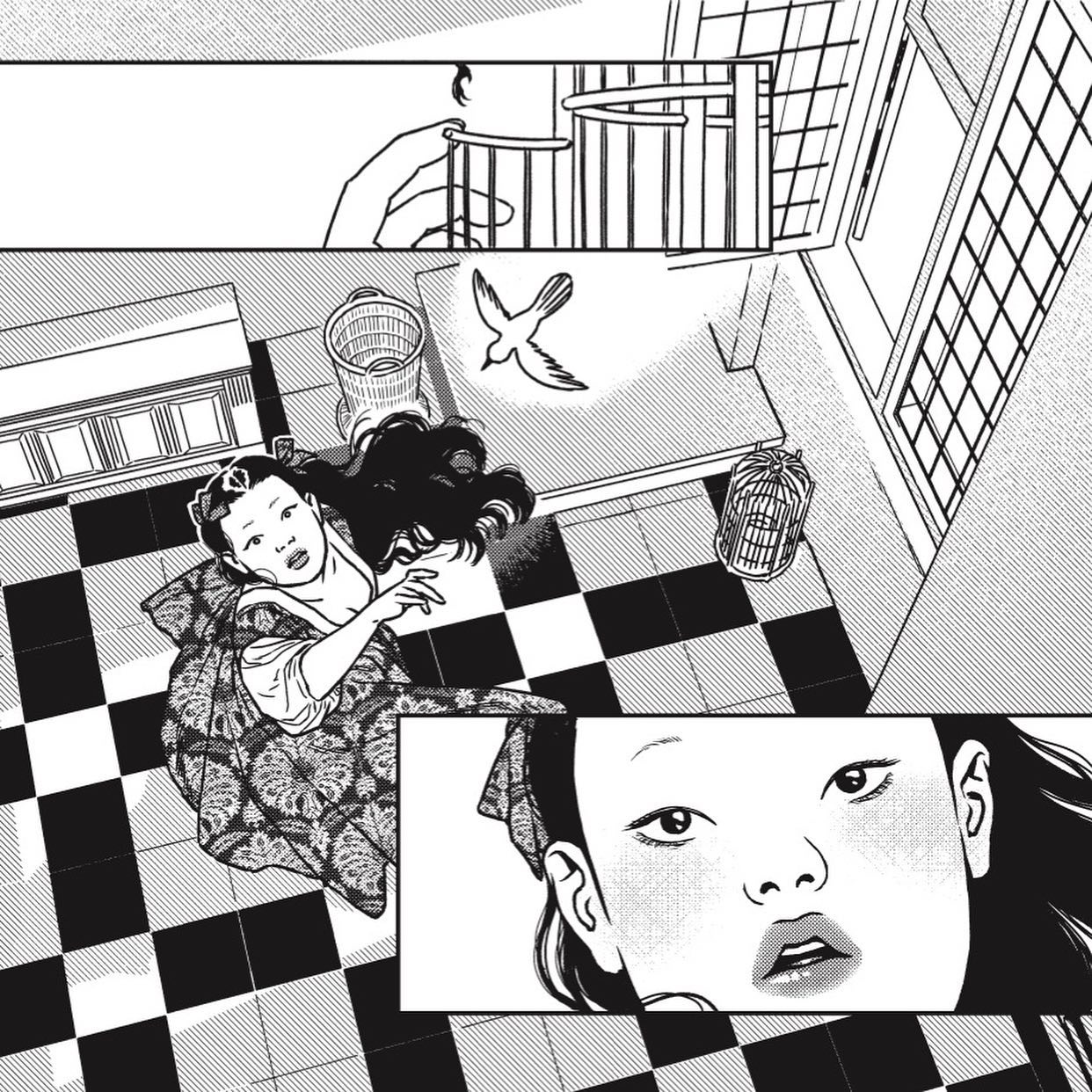Le Ciel pour conquête (Conquering the Sky) is a graphic novel published by Delcourt, France and was written and illustrated by Korean artist Yudori (유도리). Yudori’s oeuvre can be characterized by their feminist tones, and Le Ciel pour conquête is no different. It follows the life of Amélie, a young Catholic woman in 16th Century Holland who is married to a wealthy yet abusive husband. Amélie longs for nothing more but to be free from her shackles and dreams of making a flying machine that will take her far away. However, her story takes off when her husband brings home an Asian person, Sahara, whom he purchased as his sex slave.

Amélie interacts with Sahara despite language barriers, forming an unlikely bond that is not without its problems. Amélie and Sahara are complex characters with flaws; they can be jealous of each other and capable of inconsistent behaviour. Yet, they are also capable of forgiveness and kindness. This complex characterization of Sahara and Amélie allows the graphic novel to spotlight intersectional feminism.

Coined by Kimberlé Crenshaw, intersectional feminism calls for focusing on how other forms of identities can create overlapping forms of oppression, creating varied and complex experiences of inequality. In Le Ciel pour conquête, the narrative outlines how a woman’s race also affects their rights. Here, it is made clear that despite all women suffering at the hands of the patriarchy, women of colour suffer greater still. This is why Le Ciel pour conquête by Yudori is aligned with the United Nations Sustainable Development Goals of Gender Equality and Reduced Inequalities.

One way Yudori touched upon intersectional feminism is by depicting Sahara as an intelligent woman who did not speak European languages fluently and was discriminated against for it. In an Instagram post, Yudori elaborated on her decision to write Sahara with broken English in her original draft, despite her fear that people would attribute it to stereotypical portrayals of Asian women in Hollywood. These characters were often exoticized femme fatales, who were prizes for the male leads to win over or outwit.

Yet for Yudori, speaking in broken English is an authentic part of her experience as an Asian woman who was discriminated against in the Western world. “I remember when I was an exchange student in high school in the US, I used to say "shit of paper", and all the kids in the classroom would laugh, ask me to say it again, and say I was cute. Cute I was. Twice as intelligent as them, cute I was, still,” writes Yudori.
Le Ciel pour conquête by Yudori is a powerful graphic novel that weaves a narrative of intersectional feminism set against the backdrop of 16th-century Holland. Through the complex and flawed characters of Amélie and Sahara, Yudori explores themes of oppression, race, and gender, highlighting how patriarchal systems disproportionately affect women of colour. By portraying Sahara's struggle with language barriers and discrimination, Yudori brings her personal experiences to the forefront, making the novel a critique of historical inequalities and a reflection of contemporary issues. This work urges readers to acknowledge and combat the intersecting layers of oppression that persist today.
Find out more about Le Ciel pour conquête and other initiatives by Yudori (유도리) on her Instagram @yudoridori.
